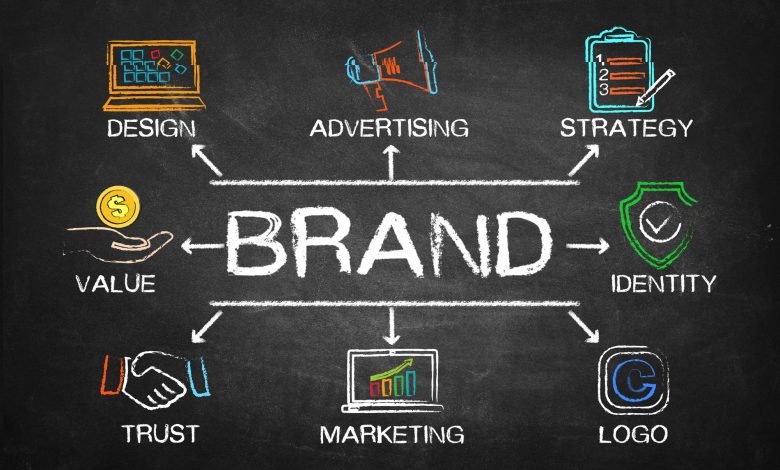
A retail store needs to follow these essential steps to develop a powerful brand identity, which will lead to market success and enduring customer relationships. A strong brand identity enables your business to gain customer trust while fostering loyalty, which results in long-term success.
The modern retail market demands businesses to create strong brand identities that allow them to differentiate themselves and achieve higher sales. A successful brand development strategy is essential for all businesses that want to establish their identity, whether they operate as new startups or need to revamp their current image. The following guide provides a complete method to develop a strong and memorable brand identity for your retail store.
1. Define Your Brand’s Mission and Values
Your store needs to establish its core values before it can develop an attractive brand identity. You should answer these fundamental questions for yourself:
- What fundamental principles does your business operate on?
- Your store exists for reasons that extend beyond product sales operations. What are those reasons?
- What specific challenge do you help your customers solve?
Your brand identity will develop authenticity when you establish clear mission statements and values that match your target audience’s preferences. Your brand identity should demonstrate sustainability values through all aspects of product sourcing and messaging when sustainability stands as a core brand element.
2. Understand Your Target Audience
Your brand identity requires knowledge of your customer base because it needs to fulfill their requirements and address their emotional needs and challenges. Research your target audience to learn about their age group, shopping behavior, and preferred brand interactions. Your brand identity will achieve better results when you understand your audience, as this will allow you to create targeted solutions.
A successful retail brand needs to connect with its target audience through emotional triggers and personal preferences. Your target customers may seek convenient shopping experiences, premium products, budget-friendly options, or environmentally friendly solutions. Your brand identity requires adjustments to voice, visual elements, and messaging content based on audience research findings.
3. Craft a Unique Brand Voice and Story
Your brand voice represents the way you interact with your customers through communication. Your brand voice emerges through a combination of your communication tone, language, and messaging, which appear throughout your website and social media content. Your brand voice needs to match your core values while creating an emotional connection with your target audience.
Creating an engaging brand story is equally important to developing your brand voice. Your brand story should include the story of your store’s creation, your mission, and all the obstacles you have faced. The emotional connection of your brand story creates stronger customer loyalty and differentiates your brand from others. A well-crafted brand story functions as a connection builder between customers and the business while presenting the company’s narrative.
4. Develop a Memorable Logo and Visual Identity
Design serves as an effective method to express the personality of your brand. Your logo, together with your color scheme, typography, and visual design elements, must create a distinct image that represents your store’s core values and mission. Implementing image copyright protection ensures your brand visuals remain secure, preventing unauthorized use and maintaining your store’s professional image across all platforms. A unified visual brand identity across all customer touchpoints—including store signs, packaging, websites, and social media platforms—builds a consistent brand experience that enhances customer recognition.
Luxury retail businesses need to create visual elements that project sophisticated and elegant qualities. A brand that wants to present playful and fun products should use a bold and colorful logo design.
5. Leverage Technology and Digital Solutions
Digital marketing has brought technology solutions to the forefront for shaping customer perceptions about your brand. The implementation of technology for customer experience improvement leads to operational efficiency and establishes your brand as an innovative leader in the market. Modern retail businesses use technology to build customer relationships through user-friendly e-commerce platforms, loyalty apps, and artificial intelligence-powered chatbots.
Your brand-building strategy should include retail technology PR as a key component. Your brand image will advance into the future by sharing technological innovations with your customers while maintaining active connections with modern technology developments. Your PR efforts should demonstrate how technology helps you deliver better customer experiences and introduce innovative features that differentiate your retail business from others. Your credibility will increase through media coverage resulting from this approach.
 6. Engage with Your Customers on Social Media
6. Engage with Your Customers on Social Media
Social media functions as an optimal method to construct and sustain your brand identity. Through social media, you establish direct customer connections that humanize your brand while delivering useful content to your audience. Your brand identity benefits from social media engagement through storytelling, behind-the-scenes content sharing, promotional activities, and direct audience communication.
Social media marketing requires businesses to maintain consistent content delivery. Your brand identity requires a single unified voice and visual presentation, which should exist across all social media platforms. Your brand identity becomes more recognizable to customers through consistent online interactions because of this approach.
7. Provide Exceptional Customer Service
Your brand identity exists through both your spoken words and the emotions you create in your customers. Your brand identity requires exceptional customer service to become strong. Customers who receive excellent treatment from your company will return for future purchases and potentially become loyal supporters of your brand.
Your brand values should guide the way you deliver customer service to your clients. Luxury brands need to deliver high-end service that provides complete attention to their customers. Your customer service should maintain a friendly and approachable tone if your brand presents itself as casual and down-to-earth.
8. Stay Consistent and Adapt Over Time
Your brand identity needs consistent execution after its initial development. All brand interactions should present the values and mission your company established from the beginning. Your brand presence in the market becomes stronger through consistent delivery of your message across all touchpoints, including your website, email communications, and in-store experiences.
Your brand identity needs to transform as your business expands because it should adapt to new market conditions. Monitor industry developments while actively seeking customer feedback to guide your brand development. Your brand identity needs periodic adjustments to stay relevant to your target audience while maintaining its current appeal.
Final Thoughts
Creating a robust brand identity requires dedication and strategic planning, yet it delivers substantial value to your business. A well-established brand enables you to differentiate yourself from competitors while building customer loyalty, which drives business expansion. Your brand identity will endure over time when you define your mission, understand your audience, create a distinctive story, use technology effectively, and maintain consistent customer engagement.
Your brand will gain industry leadership through retail tech PR implementation, which enables you to lead the market while building devoted customer relationships. The correct PR strategy demonstrates how your retail store’s modern technology implementation enhances customer experiences, drives innovation, and connects with contemporary shoppers.

 6. Engage with Your Customers on Social Media
6. Engage with Your Customers on Social Media



